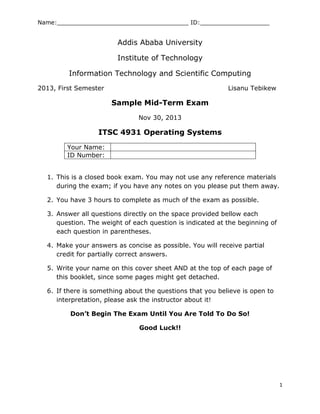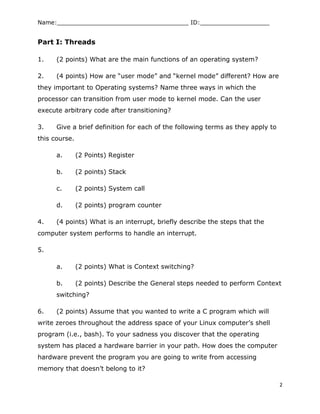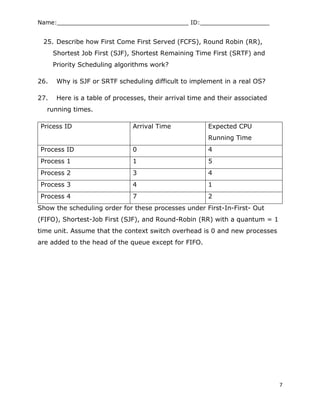This document appears to be a sample midterm exam for an operating systems course. It contains 22 multipart questions testing students' knowledge of topics like threads, synchronization, interprocess communication, and scheduling. The exam instructs students to answer directly in the spaces provided below each question and not to begin until told to do so. It also provides instructions on exam policies and wishes students good luck.


![Name:____________________________________ ID:___________________
3
Running
New Ready
Waiting
Terminated
7. (6 points) Here are nodes for three states a process can be in. Draw
directed arcs (i.e., arrows) between the nodes to indicate all transitions a
process can use (For example, draw an arc from Ready to New if a process
can go from being Ready to being Newly created). Label each arc with a 1-
word summary term (how that transition occurs) and then, below the figure,
provide a brief explanation of why such a transition happens (1 or 2
sentences should suffice) of what you meant by each summary term.
8. (4 points) Consider the following program? What would its output be?
(Hint: the echo program displays whatever is given to it to the screen)
int main(int argc, char *argv[]) {
int child_pid = fork();
if (child_pid == 0) {
printf(“Child’s id is %dn”, getpid());
execl(“/bin/echo”,”echo”,”Hello there”,NULL);
return 0;
}
else {
printf(“My child is %dn”, child_pid);
return 0;
}
}](https://image.slidesharecdn.com/ossamplemidexam-150615201509-lva1-app6891/85/Os-sample-mid-exam-3-320.jpg)



